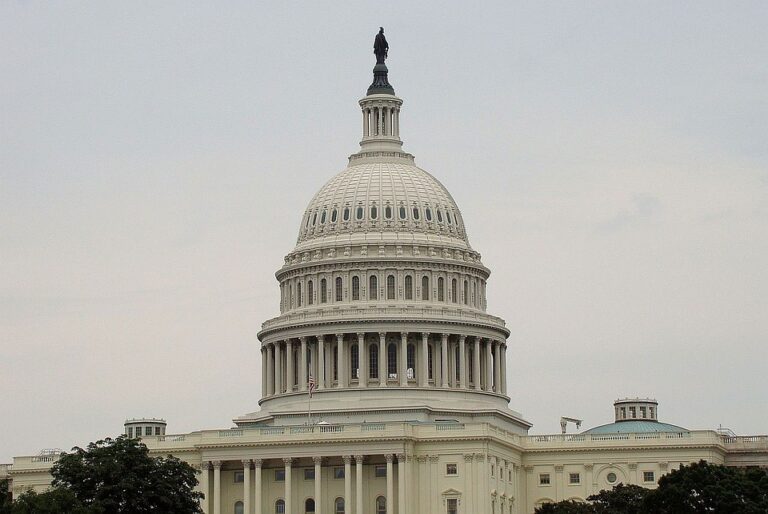Project 2025: Why Some Lawmakers Are Sounding the Alarm
In the ever-evolving landscape of global politics and environmental strategies, Project 2025 has emerged as a focal point of intense debate and scrutiny. Lauded as an ambitious initiative aimed at tackling some of the world’s most pressing challenges, it has also sparked a significant amount of alarm among lawmakers and advocacy groups. But what exactly is Project 2025, and why has it become such a contentious issue?
Understanding Project 2025
Project 2025 is an international strategic plan proposed to address key global challenges, including climate change, clean energy transition, and socio-economic inequality. The initiative encompasses a wide array of projects, from advancing renewable energy technologies and reducing carbon emissions to fostering global educational equity and improving public health infrastructure.
The blueprint of Project 2025 outlines a collaborative effort involving governments, private sectors, and non-governmental organizations (NGOs). Its multi-faceted approach is designed to harness technological advancements, drive policy innovation, and mobilize unprecedented levels of investment aimed at sustainable development.
The Alarm Bells: Key Concerns
Despite its noble intentions, Project 2025 has met with significant opposition from various quarters. Here are a few reasons why some lawmakers are sounding the alarm:
-
Financial Implications and Economic Stability:
Critics argue that the financial demands of Project 2025 could place an unsustainable burden on national economies. The proposed funding structure involves substantial contributions from participating countries, raising concerns about fiscal deficits and economic instability. Lawmakers are particularly wary of the financial strain it could impose on economies already grappling with post-pandemic recovery. -
Sovereignty and National Interests:
The project’s global governance model necessitates a level of international cooperation that some lawmakers feel impinges upon national sovereignty. The binding agreements required for Project 2025 could compel nations to adopt policies that may not align with their domestic priorities. This requirement has led to fears about eroded national autonomy and the loss of control over critical policy areas. -
Implementation Feasibility:
Doubts about the feasibility of Project 2025’s ambitious timelines have also surfaced. Skeptics question whether the proposed technological advancements and infrastructural projects can be realistically achieved within the set deadlines. Previous international initiatives with similar grand visions often floundered due to logistical and bureaucratic hurdles, causing skepticism about Project 2025’s viability. -
Environmental and Social Impacts:
While Project 2025 aims to address environmental concerns, some lawmakers argue that the environmental benefits are overstated or miscalculated. There are also concerns about the social impact of large-scale infrastructural developments, particularly in vulnerable communities. Legislators fear that rapid implementation could lead to displacement, social disruption, or ecological degradation if not managed carefully. - Transparency and Accountability:
Questions about the transparency and accountability mechanisms within Project 2025 have also been raised. Lawmakers demand detailed oversight provisions to ensure that funds are appropriately allocated and that the project’s progress is openly monitored. Without robust mechanisms in place, there is apprehension that corruption, mismanagement, and inefficiency could derail the initiative.
Moving Forward: Finding Common Ground
The controversy surrounding Project 2025 underscores the complexity of addressing global challenges through coordinated international efforts. Achieving consensus will likely require significant dialogue and compromise.
Proponents of Project 2025 argue that the stakes are too high to succumb to inertia. They believe that with proper safeguards, transparent governance, and flexible frameworks that respect national contexts, the initiative can drive meaningful progress toward a sustainable and equitable future.
On the other hand, critics emphasize the necessity of cautious planning, rigorous oversight, and accommodating diverse national priorities to ensure that the project does not become another well-intentioned but ultimately unfulfilled promise.
Conclusion
Project 2025 stands at a crossroads, emblematic of the broader struggle between urgent global action and national interests. As lawmakers continue to deliberate, the path chosen will significantly impact both the success of the initiative and the future of global cooperation in addressing mankind’s most pressing challenges. Only time will reveal whether Project 2025 becomes a cornerstone of sustainable progress or a cautionary tale of overreach and unfulfilled potential.
